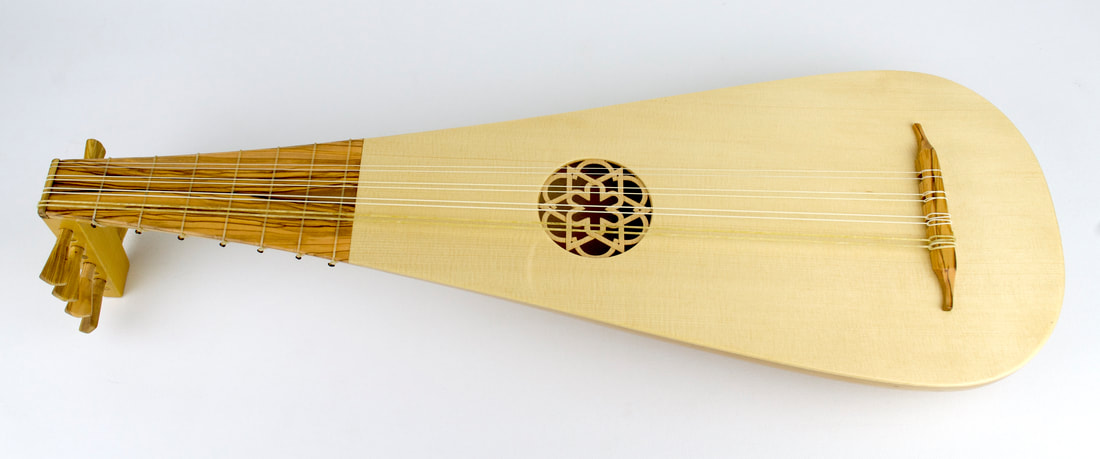MEDIEVAL LUTE
The term lute comes from the Arabic ûd and designates an instrument with a more or less pear-shaped body, with a convex back and a generally short neck. Its introduction in Europe began through the Iberian Peninsula and influenced the chordophones that already existed at that time. The instrument evolved over time, changing its design and increasing the number of strings, to adapt to the changes in aesthetic and musical style that followed.
LUTE IN SANTIAGO CATHEDRAL
3-string lute based on the sculptures of the 9th and 20th elders of the Apocalypse in the Pórtico de la Gloria of Santiago de Compostela Cathedral (Spain, 12th century).
The body is carved and hollowed from a piece of Lebanon cedar. Almond fingerboard, tailpiece and bridge. The pegs are made of boxwood and the soundboard is goatskin. It is finished with oil and wax.
SL: 500mm.
Proposed tuning: g-d'-g'
Price: €1,700.
The body is carved and hollowed from a piece of Lebanon cedar. Almond fingerboard, tailpiece and bridge. The pegs are made of boxwood and the soundboard is goatskin. It is finished with oil and wax.
SL: 500mm.
Proposed tuning: g-d'-g'
Price: €1,700.
LUTE IN THE CHURCH OF BLOOD IN LLÍRIA
4-course lute based on the paintings of the Church of the Blood of Llíria (Valencia, 1270).
The body is carved and hollowed out of one piece of linden, with a spruce top. Fingerboard, bridge and pegs are made of olive. It is finished with oil and wax.
SL: 500mm.
Proposed tuning: dd-aa-d'd'-a'a'
Price: €1700.
The body is carved and hollowed out of one piece of linden, with a spruce top. Fingerboard, bridge and pegs are made of olive. It is finished with oil and wax.
SL: 500mm.
Proposed tuning: dd-aa-d'd'-a'a'
Price: €1700.
Jota Martínez ensemble "Amors, merce non fía" (13th C.) played with this lute (from 32:00)


